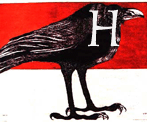
arrison Weir had a significant influence on the subsequent development of anthropomorphism. Though rarely noted, his version of knowing animals was an important source of Ernest Griset’s illustrations for Aesop (1876) and was surely influential in the development of Beatrix Potter’s twee bestiaries.
More interesting, perhaps, is the relationship between the art of Weir and the cartoon films of Walt Disney. Disney must have known of Grandville, and it is quite likely, I suggest, that he was familiar with the animal-books of Weir. While further research would be needed to substantiate this claim, it is clear that Disney’s use of types – notably in films such as Lady and the Tramp (1955) – bears a close relationship to Funny Dogs and Funny Tales. A consideration of other films and books may reveal specific analogies and resemblances, and it is possible to extend this idea across a wider range.
Disney takes responsibility for locating anthropomorphism at the heart of children’s popular culture in the twentieth century, but others directors such as Chuck Jones, Tex Avery, and Joseph Hanna and William Barbera were also practitioners in this idiom. Though informed with a hard-nosed, wise-cracking humour all of their own, and greatly enriched by the jazz scores of the forties and fifties, the inventive and sometimes bizarre inventions of these film-makers can all be linked to the art of Weir. Tom and Jerry, Bugs Bunny, and Daffy Duck seem unique creations, but might still be read, however incongruous it might seem, as continuations of a complex Victorian tradition.
Primary Works Cited and Sources of Information
Blatty, Joseph. Harrison Weir: Artist, Author and Poultryman. Beech Publishing House, 2003.
Grandville, J. J. Scenès de La Vie Privée et Publique des Animaux. Paris: Hetzel et Paulin, 1842.
Houfe, Simon. The Dictionary of 19th Century Illustrators and Caricaturists. Woodbridge, Suffolk: The Antique Collectors’ Club, 1978; revised ed., 1996.
Victorian Animal Dreams: Representations of Animals in Victorian Literature and Culture. Eds. Deborah Denenholz Morse and Martin A. Danahay. Burlington VT: Ashgate, 2007.
Last modified 1 April 2013